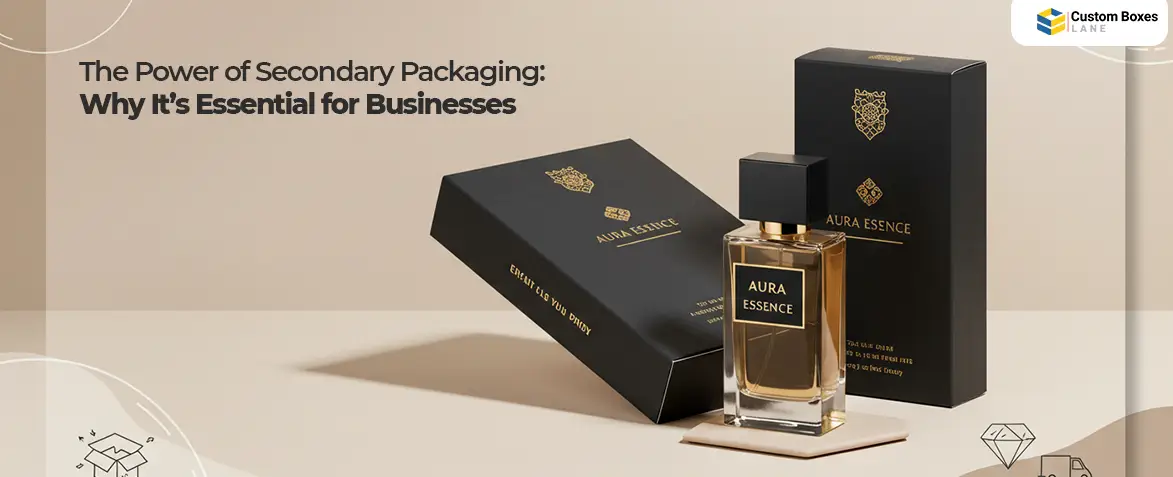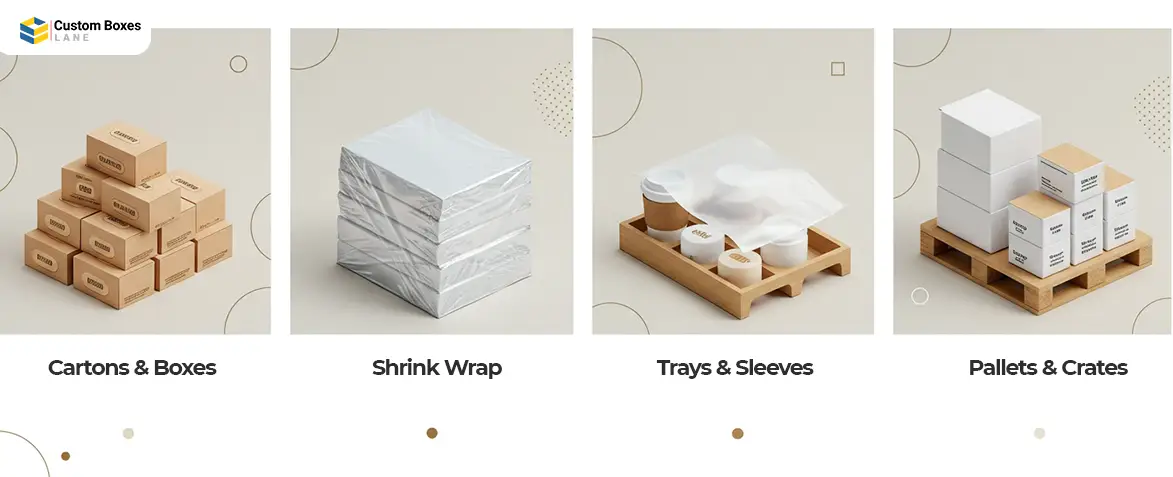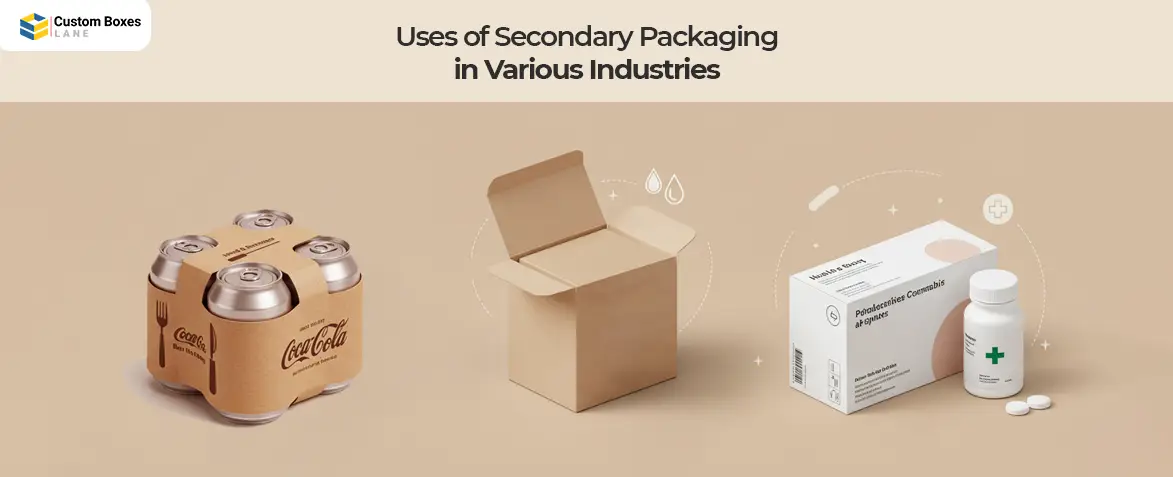The Power of Secondary Packaging: Why It’s Essential for Businesses
2025-04-15 12:46:15

In the world of logistics, retail, and e-commerce, packaging plays a critical role in product safety, brand image, and customer experience. While primary packaging holds the product, secondary packaging also serves an equally important function – grouping, protecting, and presenting products for transportation, storage, and sales.
Many businesses usually underestimate the importance of secondary packaging, but in reality, it is a crucial element in supply chain efficiency and brand positioning. Read this blog to dive deep into the realm of secondary packaging to maximize your brand visibility and profitability. Let’s begin:
Secondary Packaging Definition
Before exploring how your business can leverage secondary packaging, first, you need to develop a basic understanding of it. Put simply, secondary packaging is the layer of packaging that holds a group of individual product units together.
Unlike primary packaging, which is in direct contact with products such as cereal boxes or a soda can, secondary packaging is designed to bundle and safeguard multiple product units.
Primary vs Secondary Packaging

Now, have a comparative overview of primary vs secondary packaging. It will help you to better understand that your brand should opt for which packaging type. Primary packaging is the first level of packaging that holds, preserves and presents individual products in a practical way to end users.
It may appear paradoxical when primary packaging is enough to pack individual products, why there is a need for secondary packaging. But the thing is, primary packaging is sometimes too fragile or unwieldy for shipping purposes.
Here secondary packaging comes into play, which stabilizes the primary packaged product to prevent damage, scratching, scuffing, or tearing during shipping. Basically, secondary packaging offers superior strength and durability to primary packed products to withstand rough shipping conditions.
Common Types of Secondary Packaging

Like any other packaging type, secondary packaging also has diverse types. Common types of secondary packaging include:
Cartons and Boxes
Corrugated cartons and cardboard boxes are used for shipping multiple products together. They serve best in terms of durability, elegance, and sustainability.
Shrink Wrap
PVC, Polyolefin (POF), and LDPE (Low-Density Polyethylene) films provide a protective covering for stacked products.
Trays and Sleeves
Wood, plastic, paper, glass, and metal trays offer additional stability for retail display. Coffee, soap, cups, and cookie sleeves are also types of secondary packaging.
Pallets and Crates
Metal, wooden, block, plastic, stringer, and double-sided pallets are essential for bulk shipping and handling. Among crates, foldable plastic, wooden sheets, and metal are common types.
Why Secondary Packaging Matters for Businesses?
Although primary packaging plays the main role in effective marketing and design efforts, secondary packaging also turns the tables for businesses in several aspects. Have a look at them:
- Boost Brand Presence
Secondary packaging serves as a powerful branding and marketing tool. Using well-designed cartons or sleeves with your brand’s colors, logo, and messaging can boost recognition and create a lasting impression on your customers.
Whether it's retail-ready packaging or customized shipping boxes, secondary packaging plays a significant role in strengthening brand identity and boosting customer loyalty. Highlight your products on crowded retail shelves with premium quality secondary packaging options.
Enhance the Perceived Value of Products
Opening products or gifts should feel like a memorable experience to your customers. To make your customers caress your products, your brand should choose folding boxes and cartons with attached lids leveraging the secondary packaging.
Because secondary packaging introduces a holistic concept and triggers positive sensations when customers unbox products. With inside and outside printing, secondary packaging becomes instrumental in portraying real brand messaging and enhancing the perceived value of your products.
Offer Convenient Unboxing Experience
The first interaction between customers and the brand is manifested in the unboxing experience. Customers shouldn’t feel frustrated by the unboxing experience owing to inconvenient and complicated packaging designs.
Secondary packaging helps your brand leave a memorable unboxing experience for customers with convenient yet elegant styles. Cardboard cans, folding boxes, and flip top boxes offer sufficient stability and secure closure mechanisms with ease of handling to primary products.
So, the essential protection is available, while unboxing does not cause any inconvenience to customers with secondary packaging.
Provide Superior Protection
Products are prone to several risks such as impact, vibrations, and harsh environmental conditions. Secondary packaging acts as an additional shield, preventing physical damage and ensuring products arrive at customer doorsteps in pristine condition.
By adopting secondary packaging, your brand can translate its selling outcomes to fewer returns, reduced environmental waste, and enhanced customer experience. Boost customer loyalty and satisfaction by exercising secondary packaging solutions for your products.
Optimize Logistics and Shipping Costs
By optimizing secondary packaging, businesses can maximize space utilization in warehouses and transport vehicles. Efficiently designed secondary packaging allows for better stacking, maximizing storage costs, and shipping expenses.
A well-structured secondary packaging can lead to maximum savings on logistics while enhancing the chances of your brand's profitability. This packaging relies on stability, stackability, and efficiency while optimizing logistics and shipping costs.
Sustainable and Eco-Friendly Initiatives
With the rising demand for sustainable business practices, secondary packaging provides an opportunity to minimize environmental impact. Many brands are adopting recyclable, biodegradable, and reusable secondary packaging materials to meet sustainability goals and comply with regulations.
Smart packaging choices not only reduce carbon footprints but also appeal to eco-conscious consumers. Brands that prefer eco-friendly packaging build an ethical image, which can lead to customer satisfaction.
Things to Consider for Secondary Packaging

Beyond sustainability, secondary packaging plays a direct role in shaping customer experience. The way a product is packaged influences how customers perceive a brand. Consider the following factors when it comes to choosing secondary packaging for your products:
- Stability: The design and structure of cartons and boxes must be stable to efficiently reside on retail shelves without any support. They must also retain the structural integrity of products without any hassle.
- Stackability: The sturdy construction and stackable shapes of secondary packaging types such as square-shaped corrugated boxes are essential. The products packed inside these boxes are displayed in stackable form on retail shelves.
- Ample Space: Keep in mind to choose a type of secondary packaging box that has sufficient space to snugly fit inside packed products. The right dimensions for secondary packaging boxes play a significant role in optimizing space for packing products.
- Customizability: Premium custom options such as materials, sizes, styles, and prints take your branding to the next level. Go for secondary packaging that leverages suitable printing options to highlight your products to your potential customers.
Uses of Secondary Packaging in Various Industries

Secondary packaging has multiple applications in different industries. But the most common uses are in the following sectors:
-
Food and Beverage
In the food and beverage industry, brands must ensure packaging does not impact the flavor of products while preserving freshness and quality. Secondary packaging is a kind of shelf-ready design that serves best to preserve the freshness, flavor, and premium quality of food and beverages.
-
Health and Beauty
Talking about the health and beauty industry, secondary packaging eliminates the use of toxic substances such as parabens, sulfates, and silicones which have side effects on the skin and body. Moreover, secondary packaging serves the perfect blend of elegance, audaciousness, and simplicity.
-
Pharmaceuticals and Cannabis
When it comes to pharmaceuticals and cannabis, branding is balanced with instructional information to make customers feel confident. With printed instructions on secondary packaging, customers feel confident and empowered about taking the required amounts of medicines and cannabis.
Where to Outsource Reliable Secondary Packaging?
If your business is looking for high-quality secondary packaging solutions, partnering with an industry expert can give you a competitive edge. Custom Boxes Lane specializes in innovative and sustainable secondary packaging solutions tailored to your needs. From design to distribution, our team ensures that your products are protected, cost-efficiently shipped, and visually appealing on shelves.
Ready to elevate your packaging strategy? Contact us today to discuss how we can help streamline your packaging needs and drive business success!

